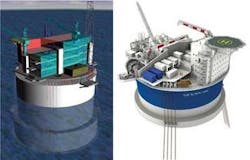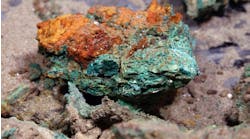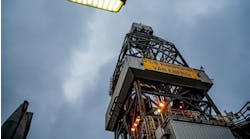Eni aiming for 2012 production start for Barents oil in the arctic
Nick Terde, Contributing Editor
Eni Norge has decided to develop the Goliat oil field in the Norwegian sector of the Barents Sea with an FPSO. The company aims to submit a plan for development and operation (PDO) by year-end with a view to start-up in mid 2012.
This schedule will enable the Goliat PDO to be debated in Norway’s parliament (Storting) during the 2009 spring session, followed by probable approval early in April. As Eni Norge’s technical general manager Arild Glæserud acknowledges, it is a tight schedule. But with eight years passing since the field was discovered, the company is keen to bring it on stream.
Goliat extends over several blocks, mainly 7122/7, /8, and /10, on production license PL 229/229B in the Hammerfest basin. It lies around 70 km (43.5 mi) from shore and 40-50 km (25-31 mi) east of StatoilHydro’s Snøhvit gas field, the first development in the Norwegian Barents. However, Goliat will be the first oilfield developed in this region. Eni is operator with a 65% stake, partnered by StatoilHydro with 20% and Det norske oljeselskap with 15%.
First the Goliat partners have to decide what kind of FPSO to use. There are three main choices:
- A ship-shape installation with an internal turret
- A geostationary installation with a steel hull
- A geostationary installation with a concrete hull.
The partners want each of the options to be further studied in a front end engineering design (FEED) phase, for which contract awards were due to be announced last month. The FEED work will take the form of a design competition, resulting in each contractor delivering a bid incorporating both technical qualification of its allotted concept and a price. The prize is an engineering, procurement, construction, and installation (EPCI) contract for the whole installation, hull, and topsides.
While Eni is keeping its FPSO options open, Glæserud notes that the geostationary platform has an advantage over the monohull if power was to be imported from shore, as there is neither turret nor swivel through which the cable would have to pass. However, the company has yet to decide on its preferred solution for powering the platform.
Steel-hulled geostationary FPSOs already exist offshore in the shape of a couple of Sevan Marine circular FPSOs. A concrete-hulled FPSO has yet to be built, though there are two concrete-hulled floaters without storage in the Norwegian sector theHeidrun TLP and the Troll B semisubmersible.
Concrete offers several advantages, says Glæserud. Construction would not depend on securing a slot from busy offshore shipyards, and also a concrete hull could be built in Norway. It is also a very robust material which gets stronger as it ages, could support a large topside load, and does not suffer corrosion.
The Goliat installation, which will probably be owned by Eni, will have production capacity of around 100,000 b/d of oil and 3 MMcm/d (106 MMcf/d) of gas, plus storage of around 1 MMbbl. Field development will require around 20 wells, including some 12 producers, six water injectors and two gas injectors. These will be housed on four-slot templates at numerous drilling centers. Gas may be either reinjected or exported to StatoilHydro’s LNG plant at Melkøya.
Despite its name, Goliat is not such a large field, according to communications manager Jone Stangeland. The Norwegian Petroleum Directorate carries a figure of just below 200 MMboe.
Economics are therefore important in the choice of concept, but technical and environmental considerations also carry weight. Two other concepts were studied:
- A floating platform with processing capability exporting oil to an onshore terminal by pipeline
- A subsea development tied back to an onshore processing terminal.
Both these proved significantly more expensive than the FPSO. The floater plus oil pipeline would have cost around NOK30 billion ($5.85 billion) and the subsea solution some NOK35 billion ($6.82 billion).
But both these concepts also would bring a higher risk of environmental damage in the event of an oil spill, says Glæserud. Because transport and loading would take place closer to shore, a spill would more likely cause onshore contamination. A spill during offloading from the FPSO would allow better response time for tackling the spill, which also could be dispersed at sea before reaching shore.
A subsea development would entail serious technical challenges. As both temperature and pressure in the Goliat reservoirs are low, multiphase transport to shore is not viable. The oil and gas would have to be separated subsea, and the oil pipeline to shore would have to be heated. This would involve using technologies at their limit. For the first oil development in the Barents, Eni prefers to use proven technology, Glæserud says.




